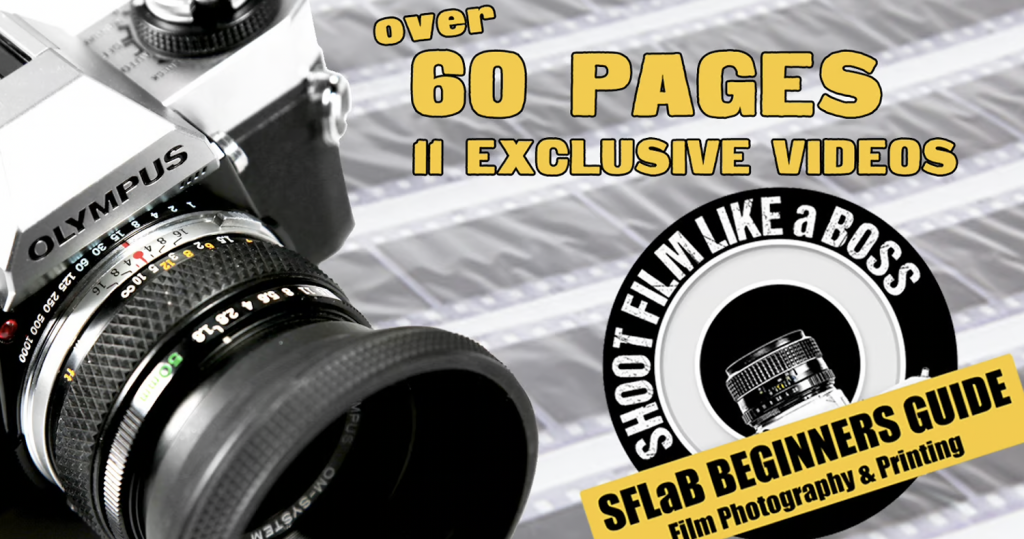Rollei Retro 80s Film
After trying and enjoying shooting Rollei Retro 400s I decided to try out the Retro80s.
Retro 80 is the replacement for Retro 100 film. Produced in the old Agfa-Gevaert N.V.fcatory in Belgium. Good exposure latitude; expose between ISO 32 and ISO 100.
- medium-speed super-panchromatic black and white film
- special coating to improve the transport properties of the film in the camera
- optimal flatness – can be used both in daylight and in artificial light without any restrictions
- due to the low blue-sensitivity of the emulsion, shots taken with a direct flash are less sensitive (this is based on using a direct flash with a color temperature of approx. 6500K)
- extended red sensitivity up to 750 nm
- can also be used as an infrared film when used with filters
- extended exposure latitude (between 32 and 100 ISO)
- good for push/pull processing
- good tone reproduction – great maximum density
- transparent = ideal for scanning and as a slide

I had two rolls to try. The first roll I shot for a vlog on my YouTube Channel on some old derelict cars. You can see the video on my channel.
It was a light overcast day and I shot the film at 50 ISO. I developed it in Rodinal at 1/50 for 11 mins. The film came out very contrasty with bright highlights and deep black shadows and very sharp with fine grain. Here are some of the images from that shoot.




I love the punchy look on grungy looking subjects but the next day I shot the other roll in my Pinhole Camera at the Beach. I shot it again at 50 ISO but this time I developed it in XTOL at 1/2 for 10 minutes. This time my negatives were much more less contrasty, which was nice to see for a seascape! Again very fine grain and obviously compromised sharpness due to being Pinhole.
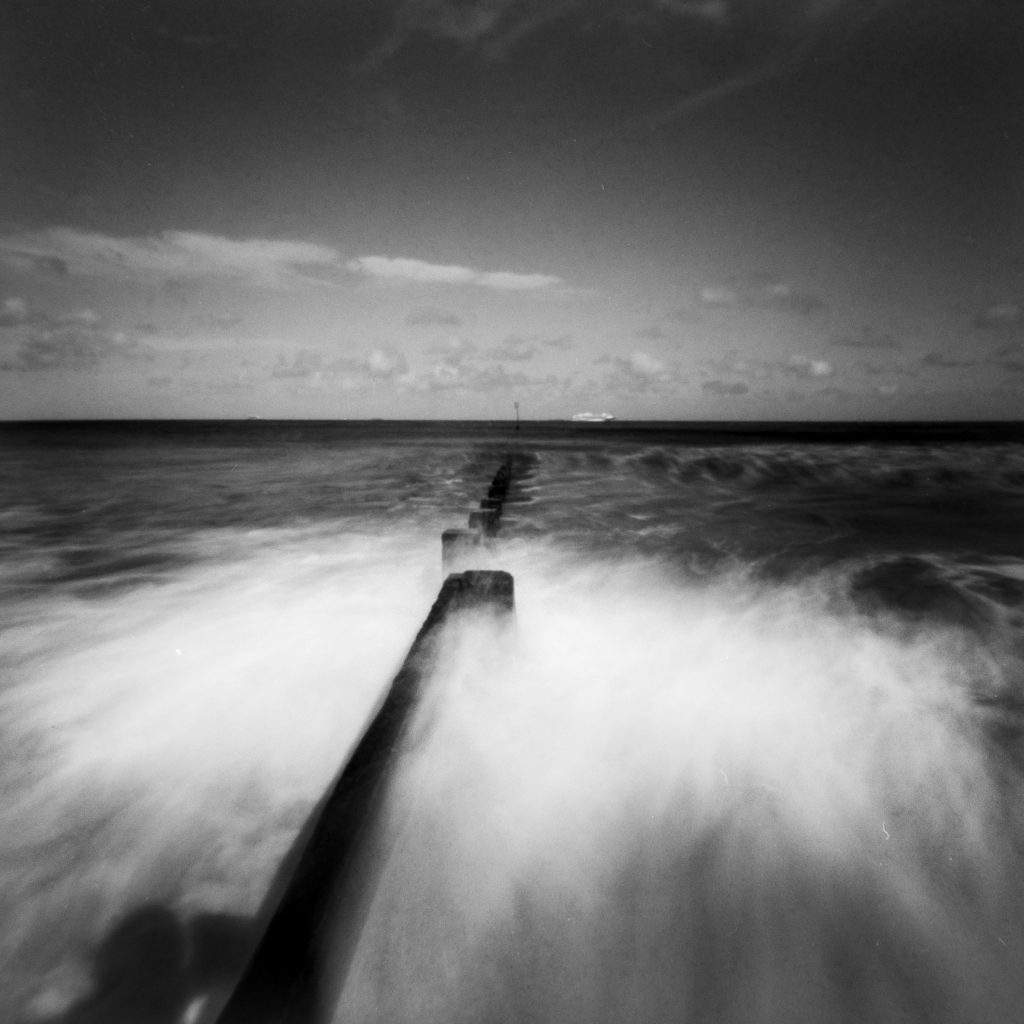



Will I shoot the Rollei Retro again? Yes! I like it. And at only £4 something a roll you get a lot of film for your money. I would, however, use XTOL for the development.
Spots on my Negatives!
(LATEST TEST UPDATE AT BOTTOM OF POST)
I developed a roll of Rollei Retro 400s and found some strange goings on that I have never seen before in all the years I’ve been developing my own films. Before I show the images I will explain the process.
When I loaded the film onto the reel, the reel was still slightly wet from the previous wash. I’ve loaded onto wet reels before in the past without any problems.
I had clean hands, as I had just finished washing the previous film.
I used my XTOL replenished stock, which other than slightly dirty looking has no floating bits.
During development I did 5 inversions every minute and gave the tank a tap as normal.
Here are the images in order they were taken.



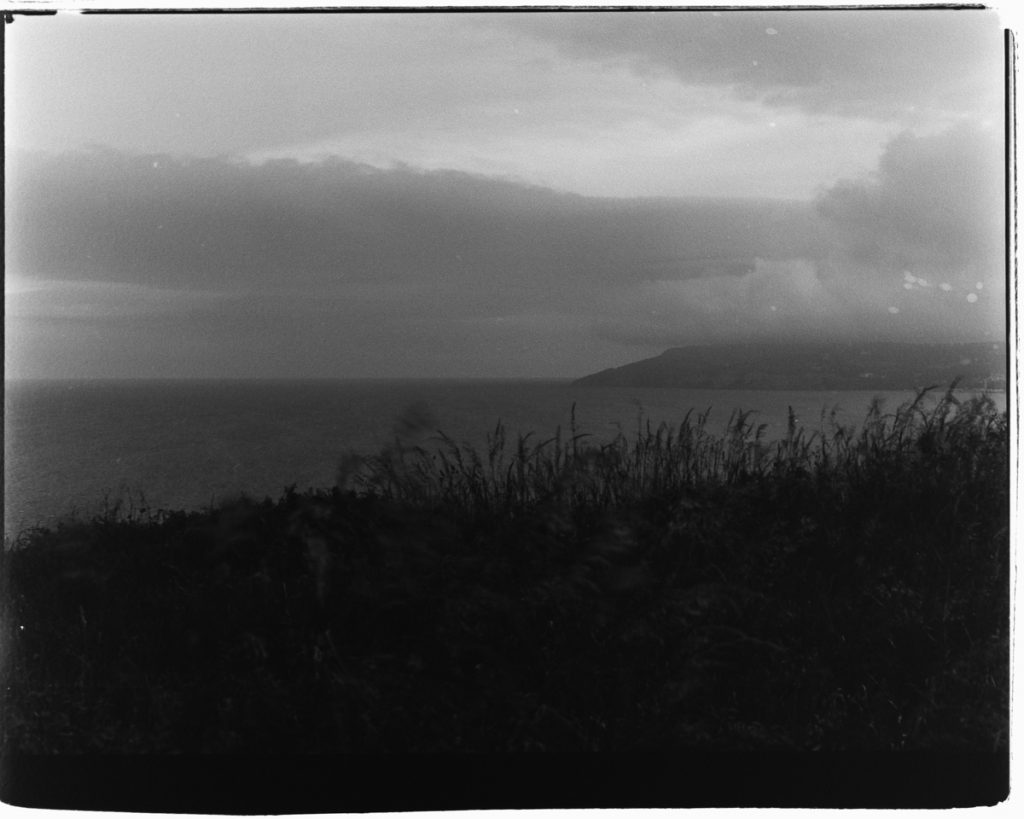
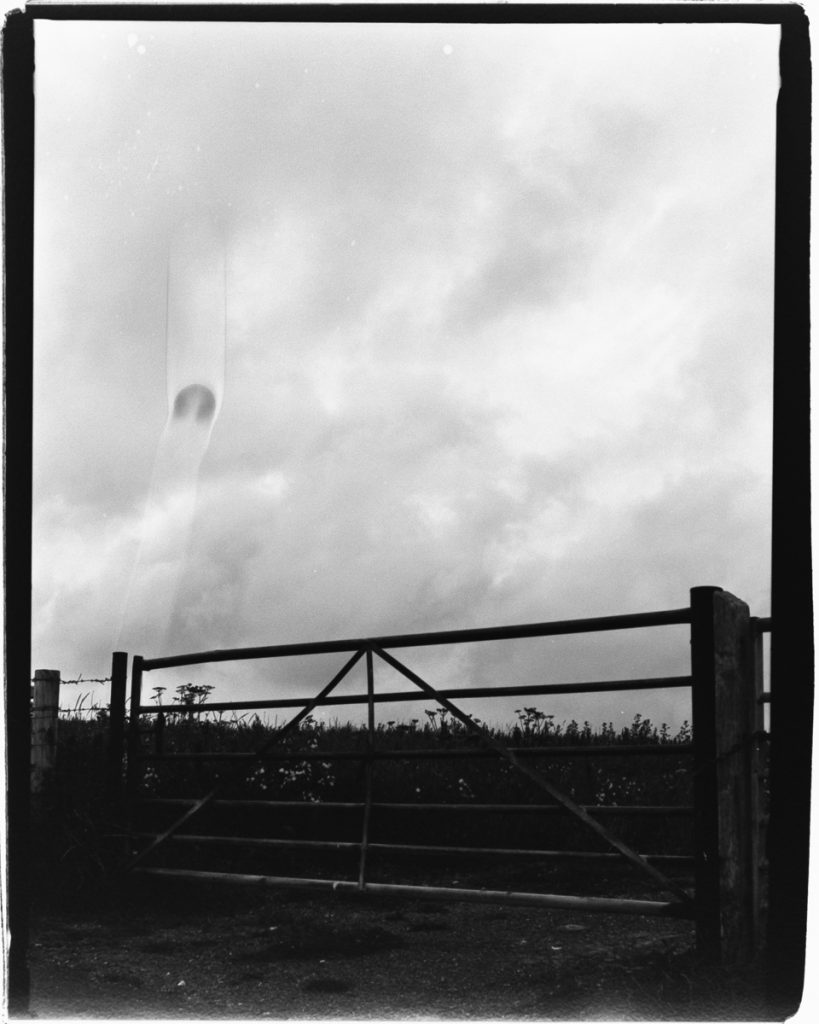










So I can’t figure this out. Any ideas?
UPDATE
I decided to do further tests to see if I can replicate the issue but on 35mm instead. I figured that when I washed the film that I was developing before I added two drops of washing up liquid for a rinse aid. I do this sometimes. I then hung the film to dry but forgot to rinse the reel and loaded the above film onto it wet and proceeded to develop.
So I replicated this using 7 frames of 35mm film. I loaded the film onto the reel which still was wet and had residue on from the washing up liquid.
After developing and washing I found one frame with a mark. Not as dark as the others but still an unwanted mark.

I then proceeded to shoot this scene in strips of 7 and develop separately making sure this time my reel and tank were totally rinsed and clean, however, still loading with a wet reel. These negatives came out with no spots at all.
So I can only assume all my problems were caused by not washing the rinse aid from my reel before loading a new film thus causing soap bubbles in the tank whilst developing. It’s only a theory and time will tell if I ever see the same again.
Rollei Retro 400s
Here’s a film I have been buying recently. I found it cheap at First Call Photographic for £3.69! And I like it too!

I like to research films to find out who’s making them and if they are rebranded and also what sort of film it is!
Here is some information I found on Emulsive.org
Rollei Retro 400S is a high-speed panchromatic black and white film with a nominal sensitivity of ISO 400/27°. The film provides a red sensitivity of up to 750mn meaning it can be used with a deep red or R72 infrared filter to capture near-infrared photographs.
Taken from MyFavouriteLens.com
The Agfa-Gevaert Aviphot Pan 400S aerial film that Rollei Retro 400S is based on was produced for mapping terrain from on high, which means it needs to be good at cutting through any low cloud that may be present.
That’s probably why they made it super-panchromatic, as opposed to merely panchromatic. This means it has an increased sensitivity to red light, which in turn means shooting Rollei Retro 400S with a red or infrared filter can result in infrared images.
If you shoot it without a filter like I did, you still get deeper blacks and brighter whites than you would with most of the un-super-panchromatic monochrome films on the market today.
From Wiki
While Agfa has retired from the photography branch, and the Agfaphoto brand was sold to a reseller named Lupus Imaging, the surviving Belgian industrial branch of Agfa continues to produce, among other things, B/W, colour negative and colour reversal materials for aerial photography. Some of these are cut to the usual 135 and 120 formats by Maco and distributed under the brand name Rollei. Specifically, these re-branded Agfa materials include Rollei Retro 80S, 200S and 400S, Digibase CN200 and CR200.

JCH Street Pan 400 is also made by AGFA in Belgium and is also Aviphot Pan 400S aerial film. Some say it’s the same film but JCH say it’s not.
From the JCH Website
So this is a re-born film, not a re-spooled film that is still being sold. This is also not an ‘old stock’ film or a ‘pancake’ that was kicking around a ‘dusty warehouse’. This is a freshly produced emulsion with an expiry date of 2020. The film was no longer being produced and I had it put back into production. And for the record, this is not re-spooled Rollei Retro 400s.
And then I read this on a forum post
“sorry for pouring lots of water in the wine, but this film is neither ‘new’ nor ‘revived’. Agfa Aviphot Pan 400S was discontinued some years ago (production; stock lasted longer). This film was not a real ISO 400/27° film, effective speed was lower. And only a little bit higher than the remaining Aviphot Pan 200. After the discontinuation, Agfa increased the effective speed of the Aviphot 200 a bit. After that the real speed difference between the discontinued Aviphot Pan 400S and the fresh production Aviphot Pan 200 was about only 1/3 stop.
The current Aviphot Pan 200 (which has a real speed in the ISO 50/18° – 160/23° range dependent on the developer) is sold as Rollei Superpan 200, Rollei Retro 400S and Rollei IR (all the same film)“
So what do you believe?
I read reviews and search for forum posts when I am interested in a particular film away from your Kodaks and Ilfords and find so many different stories. It’s like if I have a spot on my foot. I research online and some say it’s a bite others say my leg is going to fall off!
From all this I can believe that Rollei Retro 400s is Aerial Surveillance Film made by AGFA in Belgium and distributed by Maco in Germany where they license the Rollei name and also sell the film as 35mm in bulk reels. It’s the same as Agfa Aviphot 400s.
As for JCH Street Pan, I can’t see this being the same as Rollei Retro 400s. Same plant maybe but a different emulsion. If you look on the Massive Dev Chart both films have different times. JCH in XTOL 1/1 is 17 mins. Rollei at 1/2 is also 17 mins. Big difference. I couldn’t find a data sheet for JCH.
I have three rolls here to try out and I shall post my thoughts on shooting the film soon along with some scans and prints.
At the end of the day it does no harm to research films. I’m grateful that it’s out there for us to shoot and enjoy. Just don’t believe everything you read.
Rollei Superpan 200 Film
From Emulsive.org
Rollei Superpan 200 is a medium-speed black and white negative film with a nominal sensitivity of ISO 200/24°. The film is ideal for push processing and like Rollei Retro films, is based on the Agfa Aviphot family of emulsions. This means the film features excellent tonal reproduction, an extended red sensitivity and responds well to push processing.
It’s also known as Agfa Aviphot 200 or Agfa Superpan 200 and can be developed as black and white slides. It also has an Infrared sensitivity up to 750nm.
It is made by AGFA in Belgium and these are cut to the usual 135 and 120 formats by Maco in Germany and distributed under the brand name Rollei. Same as the Rollei Retro 80S, 200S and 400S which are aerial surveillance films.
I have experimented a few times with this film and I had half a roll left in the can with this particular roll and I wanted to see how it looked pulled to 100. So I took my Light Meter out and set it to 100 ISO and spot metered my scenes. Some I took spot reading of the brightest areas, middle areas and shadow areas and averaged and others I spotted for middle grey and decided where on the zone system scale I wanted that scene to fall.
I had good results with guessing my zones and also pulling the film. I developed in my XTOL Replenished stock, which is still going well, and developed for 8 minutes.
I used a Chinon CS Camera with a Hanimex 28mm lens.
[envira-gallery id=”2009″]
AGFA COPEX RAPID
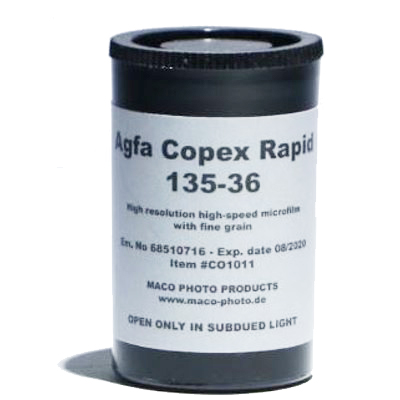
Here is another film I recently tried. AGFA COPEX RAPID!
See the Video –
This is from Emulsive Website –
Agfa Copex Rapid is a low-speed panchromatic black and white film with a nominal sensitivity of ISO 50/18°. Excellent resolution, very fine grain and excellent acutance are characteristic of Copex Rapid. Copex Rapid is coated on a polyester base and ideal for reversal processing in the Scala process.
Copex Rapid remains one of the only Agfa films sold under that brand name. It is purchased, bulk loaded and sold by Macodirectin Germany.
A little more research and I found this film was used for ‘Microfilm’ and has some crazy ass resolution IF developed in Spur Modular UR which is available from
From Nik & Trick Website
Copex Rapid is ideal for reversal processing in the Scala process but can be developed at home as a b&w negative film.
Agfa Copex Rapid is recommended to be developed with Spur Modular UR for optimal results. The Parts A1 and B are needed for the absolutely streak-free development of the SPUR DSX/Agfa Copex Rapid roll film; Part C is no longer needed as previously. When Copex is developed with Spur Modular UR, sharpness, fine-grain, exposure latitude, tonal values, speed utilisation are retained by Spur Modular UR developer.
Well, I didn’t have any Spur Developer (Which is a low contrast developer) and I wasn’t going to buy any so with a bit more research I found I can develop the film in good ole Rodinal 1/100 for 18 minutes. So I did just that!
I went to the local farm for some photos. The images below are scanned.
Quite contrasty (It was a sunny afternoon) but hell are they sharp! Maybe to lower the contrast I should try Rodinal at 1/200 or maybe XTOL at 1/3. But for best results it appears Spur Developer is going to be the winner. But like I said, I wasn’t going to invest in it. However, I’m happy with what I got from the Rodinal.
TEST 1
[envira-gallery id=”1928″]
TEST 2
[envira-gallery id=”1956″]
Derev Pan 100 (Film Photography Project)

This is Derev Pan 100 supplied by the Film Photography Project for around £9.99 a roll for 36 exp.
I wanted to know who makes the film, or what manufactured brand film is inside. On their website FPP say ‘DEREV is named after the forests of the Ukraine, its country of origin as a scientific aerial photographic film’.
Svena used to be a main manufacturer of photographic supplies, including film, but went bust in 2000 and the equipment today is used by Astrum. I’ve read that Astrum use the equipment to cut tech film from AGFA and Kodak. Not sure how true that is. Astrum also make Svema branded films.
There are Svema Foto 400, 200, 100, Mz3 (ISO 3) and also a 64. All available at Analogue Wonderland.
I have used Astrum before. Astrum 400 is a very nice film. Very thin but renders great contrast and tonality. I checked my Derev negatives against my Astrum 400 negatives and the base is slightly thicker, but still not as thick as say Ilford or Kodak films. I’ve not tried Astrum 100 so I can’t compare the two.
So for now I am guessing Derev 100 is Astrum/Svema 100 re-labeled.
Looking at the Astrum packaging I wouldn’t have touched it as they look like cheap Russian/Ukrainian films. However, being rebranded for the Western side of the globe the packaging seems more appealing and trustworthy so well done to the Film Photography Project and it’s re-sellers for bringing this film onto the market. It won’t disappoint.
Like I said I have tried Astrum 400 as it was sent to me, and I liked it a lot.
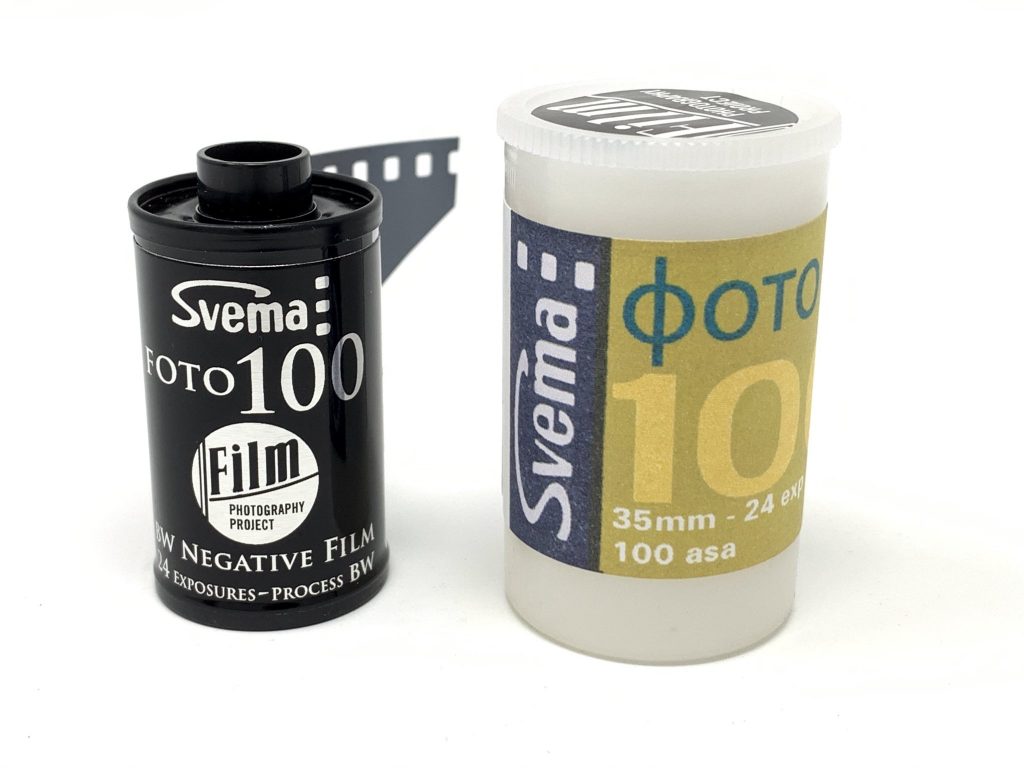

So on with the Derev 100 Film. I went out and shot a roll at the local train station. Train stations are usually boring but over here on the Isle of Wight they are still pretty much as they were when trains were ran by steam! So you’re not short of nostalgia if you look for it.
As expected the film negatives did start with light leaks around the sprocket holes. This is because the film is quite thin and rolled into normal 35mm film cassettes. But it doesn’t leak into the frames so that’s good.

And the images themselves are sharp and full of tonality with, I find, a creamy, punchy look. Here are some scans of the images I took.
Camera – Nikon f90X.
Developer – XTOL Stock 9 minutes.
Conditions – Light Overcast
[envira-gallery id=”1889″]
Silberra 75N+ (74N+) ORWO
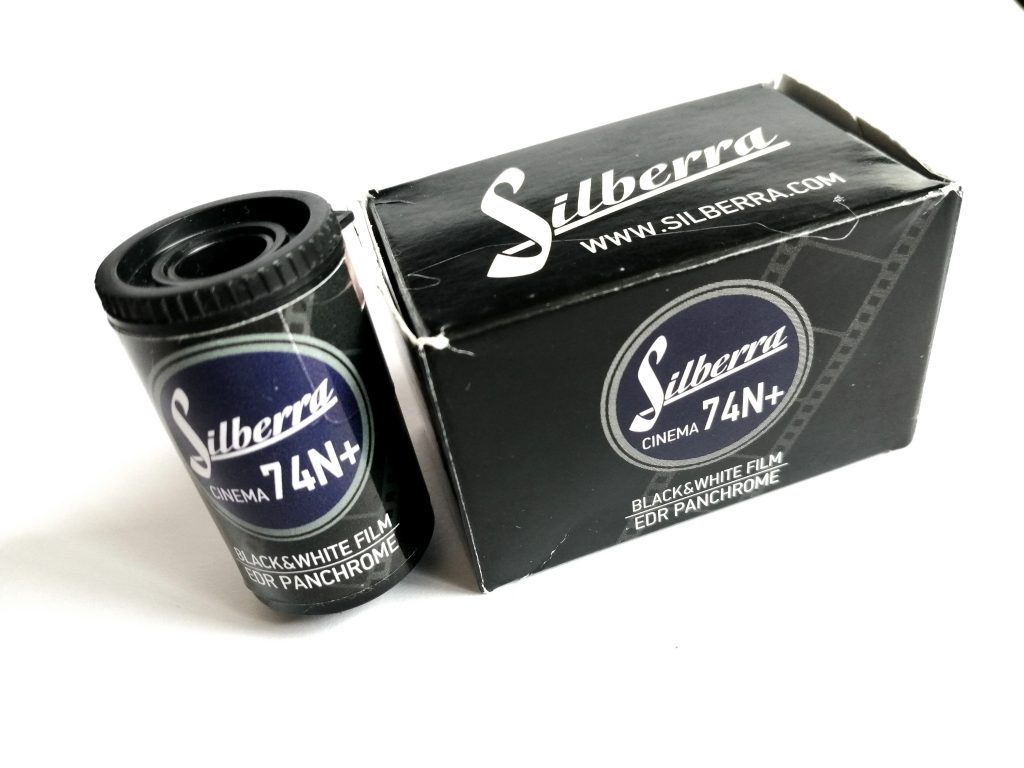
Here is the Silberra 74N+ 400 speed film.
It’s actually manufactured by Filmotec in Germany and released as ORWO N74+. A ‘Motion Picture’ film which is released by Filmotec in 100 ft rolls. Great if you are a bulk loader. If not then other companies, such as Silberra, re-package the film pre rolled and into 36 exposure cassettes. However, it’s now discontinued and sold as ORWO N75+ and rated at 320 ISO/400ISO.
Analogue Wonderland sell the Silberra branded version (New Cassettes, DX Coded) of ORWO’s N75+ for around £12 a roll. Nik & Trick sell their own version of the ORWO N75+ for around £6.80 (30 exp – No DX Code-Used Cassettes) however, if you are into saving and can bulk load you can buy a 100ft roll from Nik & Trick for around £80 which will give you 18 rolls for around a fiver (£5). Massive saving! Especially compared to Silberra’s Package. Silberra use brand new cassettes and their versions are DX coded, handy for the point and shoot cameras!
Whilst I am in no way an expert on this film or working with the two companies suggested above I have recently been shooting ORWO film and the research above is my own if in the future I decide to shoot more of the stuff. But I do like it!
So I went out and shot a roll of ‘Silberra 74N+/ORWO discontinued N74+ to see what it’s like. To be honest I could see no difference between this film or my experiences with Ilford HP5+. A bit more punchy in the black areas if anything swaying more towards Kodak Tri-X- 400. So I went out and shot some scenes late in the afternoon. The sun was low but still quite bright.
I developed the film in my XTOL replenished soup for 7 minutes. The negatives came out well and here are scans I made of the film. I have yet to take the negs in the darkroom but when I do I can expect some deep blacks, bags of latitude and tones and some grain in the prints.
Camera – Nikon F90X
[envira-gallery id=”1855″]
Rollei RPX 25 Film
Recently I shot some long exposures on Rollei RPX 25 Film. It was early morning with beautiful clouds and to help with getting past the 1 second mark I added a Red Filter and also a Polorising Filter to my lens.
I developed the film in my replenished XTOL stock for 6.5 minutes at 20°.
Negatives came out well with very fine grain. I had to pre-wash the film first to get rid of the anti dilation dye that I know is quite heavy on this film. I didn’t want that colour to get into my XTOL STOCK.

The reciprocity failure times were not bad at all. I found some information online for this.

Here are the scans from that shoot. I don’t use a professional scanner but the scans give me an alternative reference to a contact sheet.
You will see I bracketed my shots starting with 3 second exposure, the 1 second then 6 seconds. And here is the YouTube video associated with me shooting this film.
[envira-gallery id=”1766″]
ORWO UN54 35mm FILM
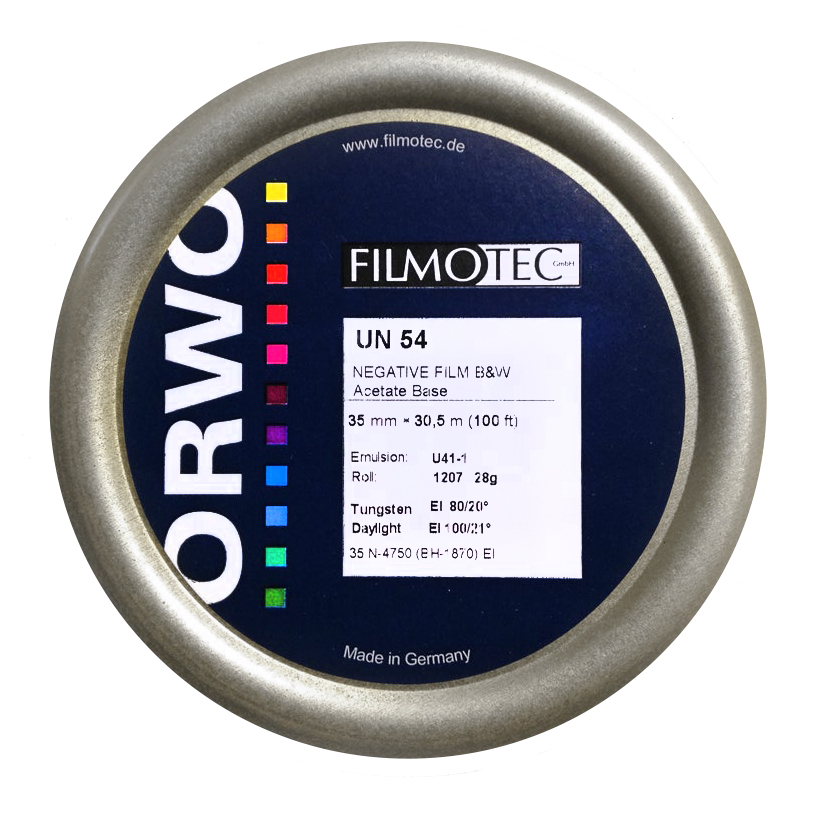
I have had two rolls of ORWO UN54 (1oo) 35mm B&W Film for some time and have been waiting for a time where I can shoot the film and feature it on the SFLaB channel.
Like any other photographic films I am not used to I have to do a little research, mainly it’s characteristics and other users reviews also. And the big question, if I like it where can I buy it!
What I know so far
It’s a Black and White Panchromatic Film manufactured in Germany by a company called ‘Filmotec’ and is manufactured for motion picture cinematography. The company says it can be processed as black and white reversal film and be used to produce direct positives.
You can’t buy it from the factory as 35mm film rolled into cassettes for photographic cameras. It is sold in bulk reels. So you either need to find supplier that has bulk loaded the film into 35mm cassettes for photography or buy a 100ft reel, as seen above, and bulk load yourself, if you know how and to be honest, I don’t. So if I like the film I will have to look for someone that has pre rolled into camera film cassettes. I found online there are a few suppliers one being ‘The Film Photography Project’ which sells the rolls for $7.99. And also Nik and Trick here in the UK for £6.60.
If you do want to buy a 100ft reel and bulk load yourself then they seem to be more available and I can get a 100ft reel here in the UK from Nik & Trick for £61.99 inc VAT. I guess I can get 18 rolls from that 100ft reel so I can shoot a 36 exp roll for £3.44 with a bit left over for fun. Then of course you need a bulk loader and empty film cans. I’m sure if you hunt around you can buy these for pennies in bulk but if you’re like me I save a lot of my 35mm film cassettes with a small strip of film hanging out, in case I ever want to bulk load.
It’s easy to save your used cassettes for bulk loading. Just don’t crack the cassette open when you develop your film. Load the film onto your spool whilst it’s still inside the cassette and when you come to the end just cut the last frame leaving some hanging from the film. You do, however, need to rewind the exposed film carefully inside the camera so you leave the leader hanging out of the film. You can usually hear the film come off the advancing cogs inside the camera as you rewind back. Thats when you know the film has been rewound, light tight and just the leader hanging out.

Some cassettes are have twist-off lids which are great for no fuss bulk loading. Not so popular to find though.

So, with this research out of the way I’m off to shoot the film. And you can see me shooting the film and developing the negatives and some prints on the SFLaB YouTube channel.
I have already made a developing test using my Replenished Kodak Xtol developer and I found best results for my development is 6 minutes at 20°. This is a stock solution. I could not find a stock time on the massive dev chart. Only 1:1 for XTOL.
[envira-gallery id=”1730″]
Black Lives Matter IOW
Peaceful gathering on the Isle of Wight 5th June 2020.
Camera – Olympus OM20, Film, Kodak Double X, XTOL Stock 10 minutes.
[envira-gallery id=”1692″]

